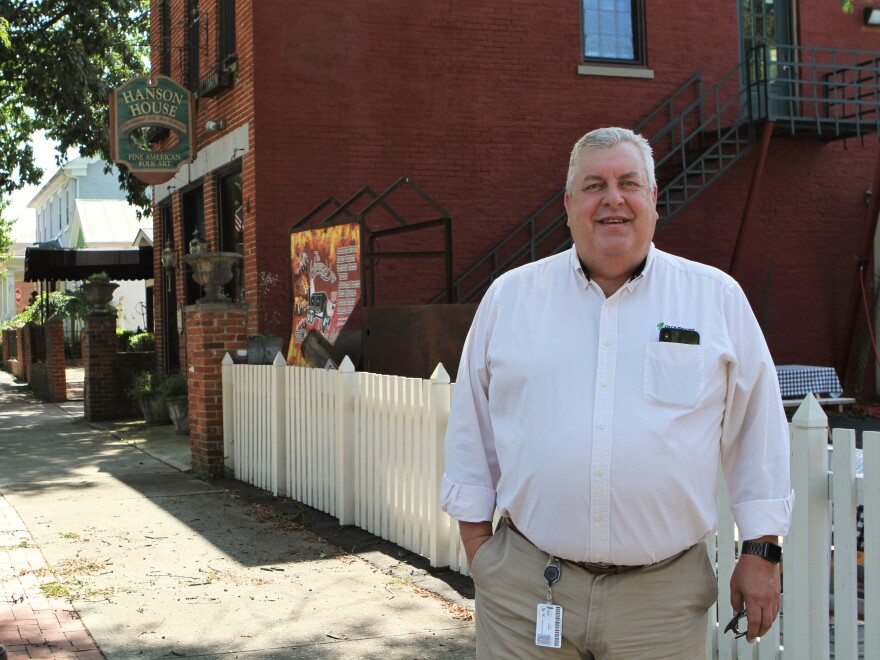City leaders in the small suburb of Groveport want to make-over Main Street, reviving their downtown and draw in more retail and restaurants.
Over the past 40 years, the city just southeast of Columbus has become a hub for warehouse and distribution centers.
“Our Main Street is kind of a blend," says Groveport development director Jeff Green. "You’ve got some of the older stately residential properties, combined with the commercial properties. So it’s a little bit of a mix."
Green says the city has purchased several empty downtown lots to promote business growth. They are also advertising in places like Business First, Columbus Monthly, and the Columbus Dispatch.
“I think visibility for us is a big thing," Green says. "I think a lot of people don’t realize that we are a suburb of Columbus, that we share a border with Columbus."
Green says the city hopes to attract new family-owned businesses like Little Italy on Main Street. The restaurant has been serving pizza, pasta and sub sandwiches to customers for 40 years.

“Our weekend couldn’t get any busier,” says Avery Ward, Little Italy's manager.
Ward says he wouldn’t mind some more retail shops nearby, but not necessarily another pizza shop.
“We see a lot of repeat regulars and I think bringing in additional restaurants to the city of Groveport, I mean, may be a good thing for the other residents, but other businesses in town, it would definitely have a huge impact on us,” Ward says.
Green says the number of residents in Groveport has been growing steadily since 2000. It became a city after the 2010 census, and Green estimates about 6,000 people now call the city home.
During work hours at the warehouses, Green says Groveport expands to about 13,000 people. More than 7,000 cars a day travel on Main Street.
“For some reason, that has not yet translated into retail growth, particularly restaurants, which is sort of a sore spot with the city,” Green says.

The city collects nearly $11 million annually from income taxes, the bulk of which comes from the warehouses. Collectively, Groveport residents pay less than $1 million of income taxes a year.
While some mom-and-pop shops have folded, other new downtown businesses have succeeded - like The Hansom Hog, a BBQ spot that opened eight years ago.
“They come over here for lunch, fall in love with it, go back and tell their bosses and then we do their safety meetings and things like that,” says Rick Hanson, the BBQ's owner.
Hanson says he would like to see more businesses on Main Street.
“That would be great,” Hanson says. “The competition thing, we don’t have any. We’re our own competition. However, I’d love to see more BBQ everywhere.”
Green says Groveport directly competes with nearby communities like Obetz, Canal Winchester and Lancaster. One of its primary incentives to attract new investment is a 15-year/100% property tax abatement.
Groveport wants more businesses, but to get them, it needs more residents. And that's an entirely different - and more difficult - challenge.
“It seems to be a little bit harder to attract restaurants and other types of retail from the outside, simply because of our demographic, the number of rooftops and the number of residents that we have,” Green says.

Green says about 100 new homes are already in the planning stages. But now the question is how much land remains for more housing.
“It comes down to available land and how that available land is used, the best and highest use,” Green says. “For the city, the best and highest use is going to produce revenue, the income tax that helps sustain the city.”
Green says the city may annex some property from Columbus to enable more growth. He would prefer small, locally-owned businesses move in to boost the restaurant and shopping environment.
This fall, the city plans to offer a series of workshops and a 12-week training program for would-be entrepreneurs. Green says larger businesses are also ready to help.
“They’re interested,” Green says. “They realize there’s a lot of potential here, particularly if you have a restaurant that does a breakfast and lunch business. We feel we’re the perfect market for that.”






